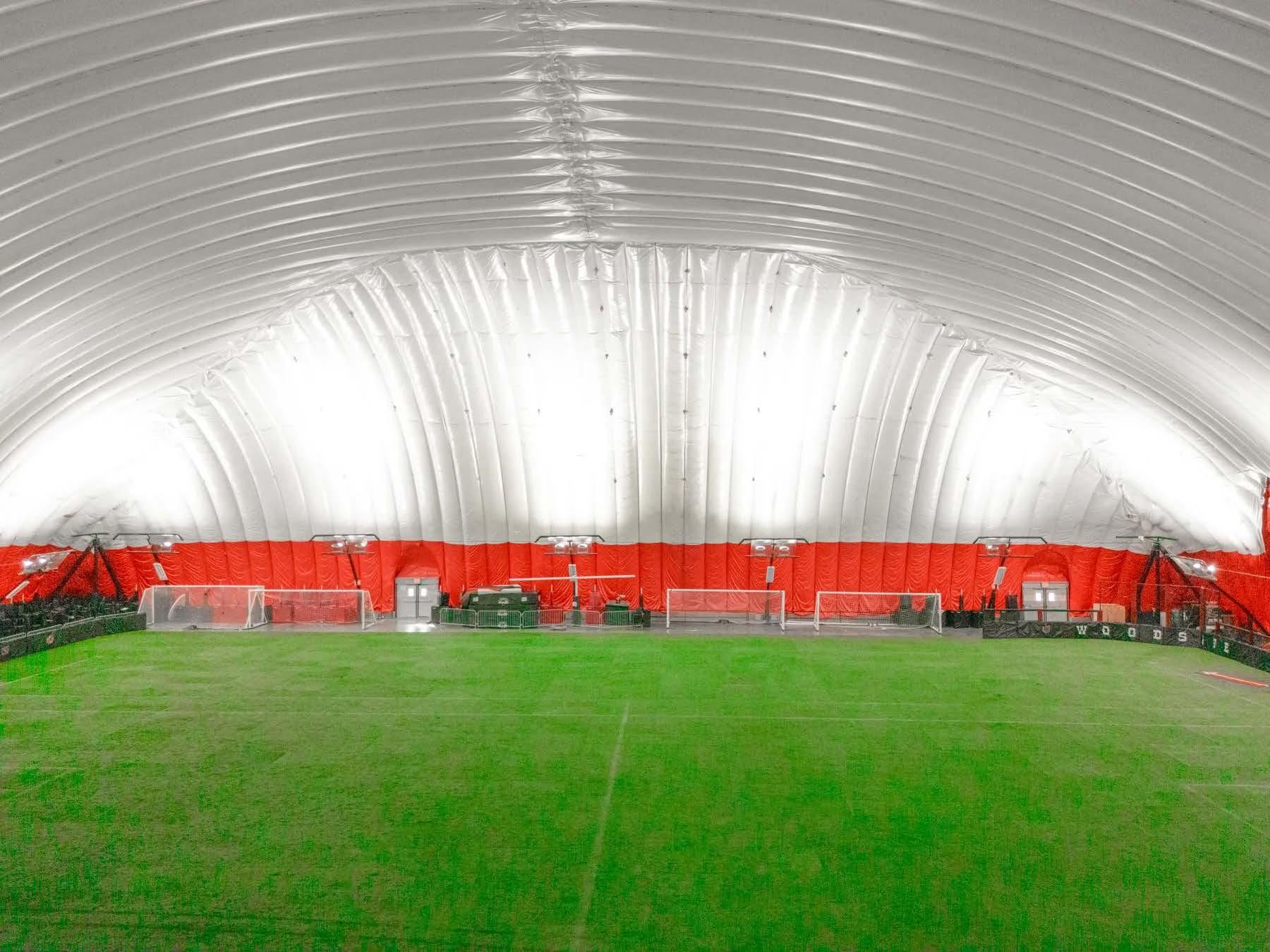
4 minute read
Fast-Tracked and Fully Lit
Keystone Technologies Relights Wisconsin’s Dells Dome in Record Time
By Parker Allen
Photos courtesy of Nick Baranowski
When a severe March snowstorm collapsed the Dells Dome at the Woodside Sports Complex in Wisconsin Dells, WI, the facility faced a daunting challenge. The upcoming calendar was full, starting with a notable Little League tournament on Memorial Day weekend.
That left only a few short weeks to rebuild the structure and to modernize the lighting system that had previously relied on aging 1000-watt metal halide fixtures.
Thanks to a rapid response from Keystone Technologies and close coordination between rep Casey Electric Sales, distributor Viking Electric, and contractor Dakota Electric Service, the project was completed in just three weeks. The result was a dramatic improvement in lighting quality—and a 60% reduction in energy use.
A WINDSTORM, A DEADLINE, AND AN OPPORTUNITY
Dells Dome is a 90,000-square-foot indoor athletic facility which hosts many sports year-round, from volleyball and wrestling to youth baseball and soccer.
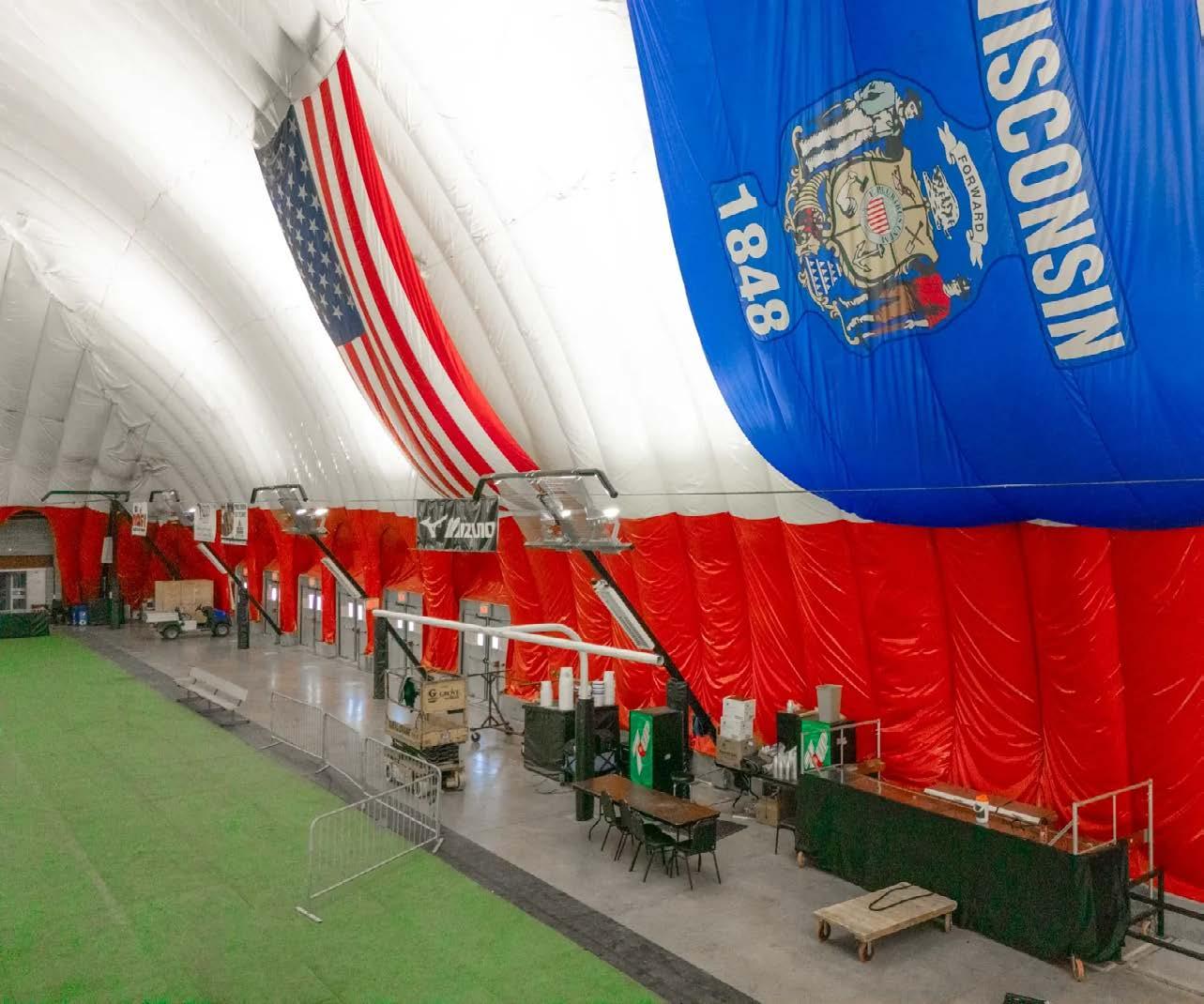
The project originated with an emergency call. “We had a good windstorm that came through Wisconsin and more or less deflated the dome,” explained Neil Murray, Vice President of Sales for Wisconsin and Upper Michigan at Casey Electric Sales. With Memorial Day around the corner, they were operating on a tight deadline.
Prior to the storm, the facility’s 100 metal halide fixtures mounted on poles were both energy-intensive and due for an upgrade. The dome collapse accelerated earlier retrofit plans to an immediate need.
FROM CONCEPT TO INSTALLATION
Murray was looped into the project by Viking Electric. The need was for a sports lighting solution that could be installed quickly, deliver high output levels, and maintain a consistent, glare-free experience for players and spectators alike.
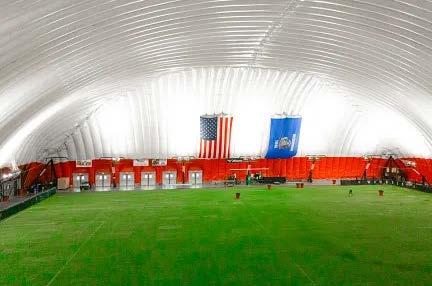
Keystone’s lighting design team got to work quickly, turning around a full lighting layout within 24 hours. The design had to consider the geometry of the dome, aiming angles, footcandle targets, and fixture placement. All 25 poles in the dome would be outfitted with two fixtures each, for a total of 50 luminaires replacing the original 100 metal halides.
Keystone’s design team mocked up several solutions, landing on the 750-watt sports lighter as the ideal choice.
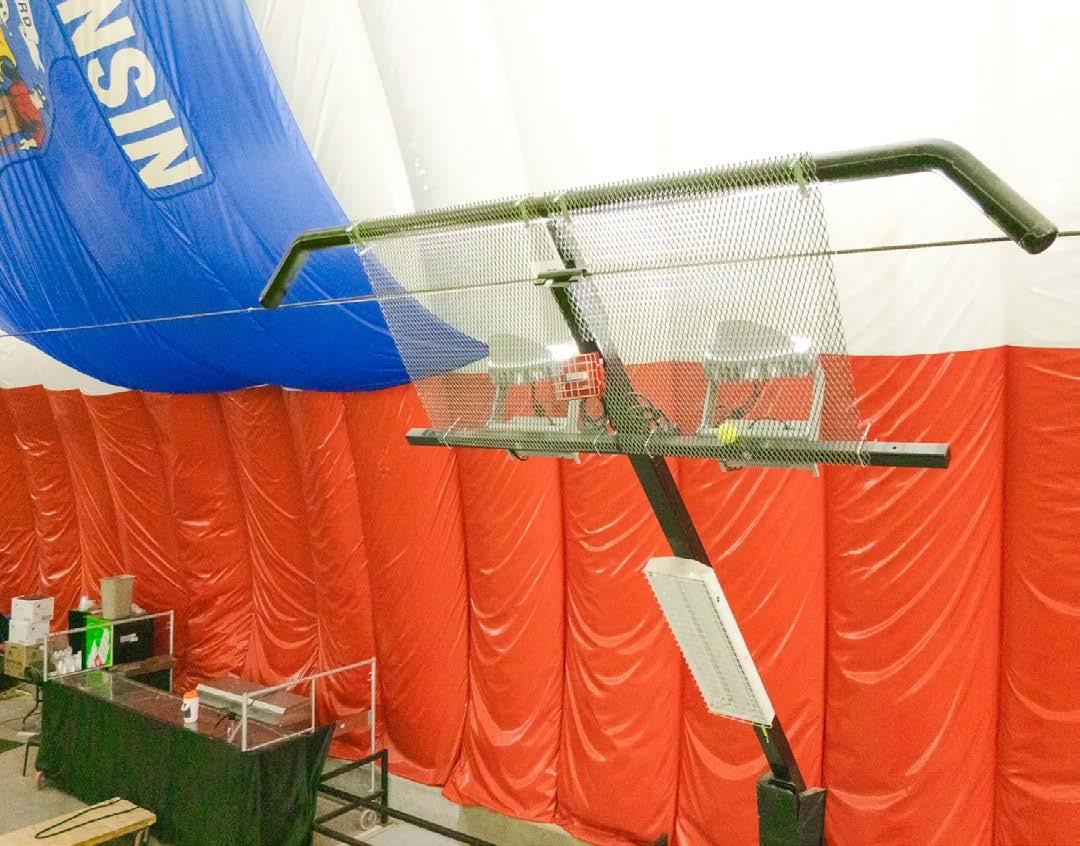
However, there was a curveball. The fixture typically ships with a 30° beam angle, but the Dells Dome required a wider 40° lens to provide even coverage and avoid hot spotting on the curved interior. That specific configuration usually comes with a 4–6-week lead time.
Given the urgency, Murray contacted John Davies, Keystone’s Director of Sales, to discuss solutions. What followed was a textbook example of responsive, customer-focused collaboration. Thanks to some creative inventory coordination and a well-timed production adjustment, Keystone reallocated 50 units of the custom 750W fixtures, meeting the project timeline without missing a beat.
The final design delivered an average illuminance of over 90 footcandles across the playing surface, ensuring excellent uniformity and visibility. The 40° optics provided wide, even coverage, with fixtures tilted upward at 45° to avoid glare and shadows on the dome’s interior surface.
“The layout helped solidify the decision,” Murray said. “It gave everyone confidence that the 40-degree optics would eliminate the hotspots.”
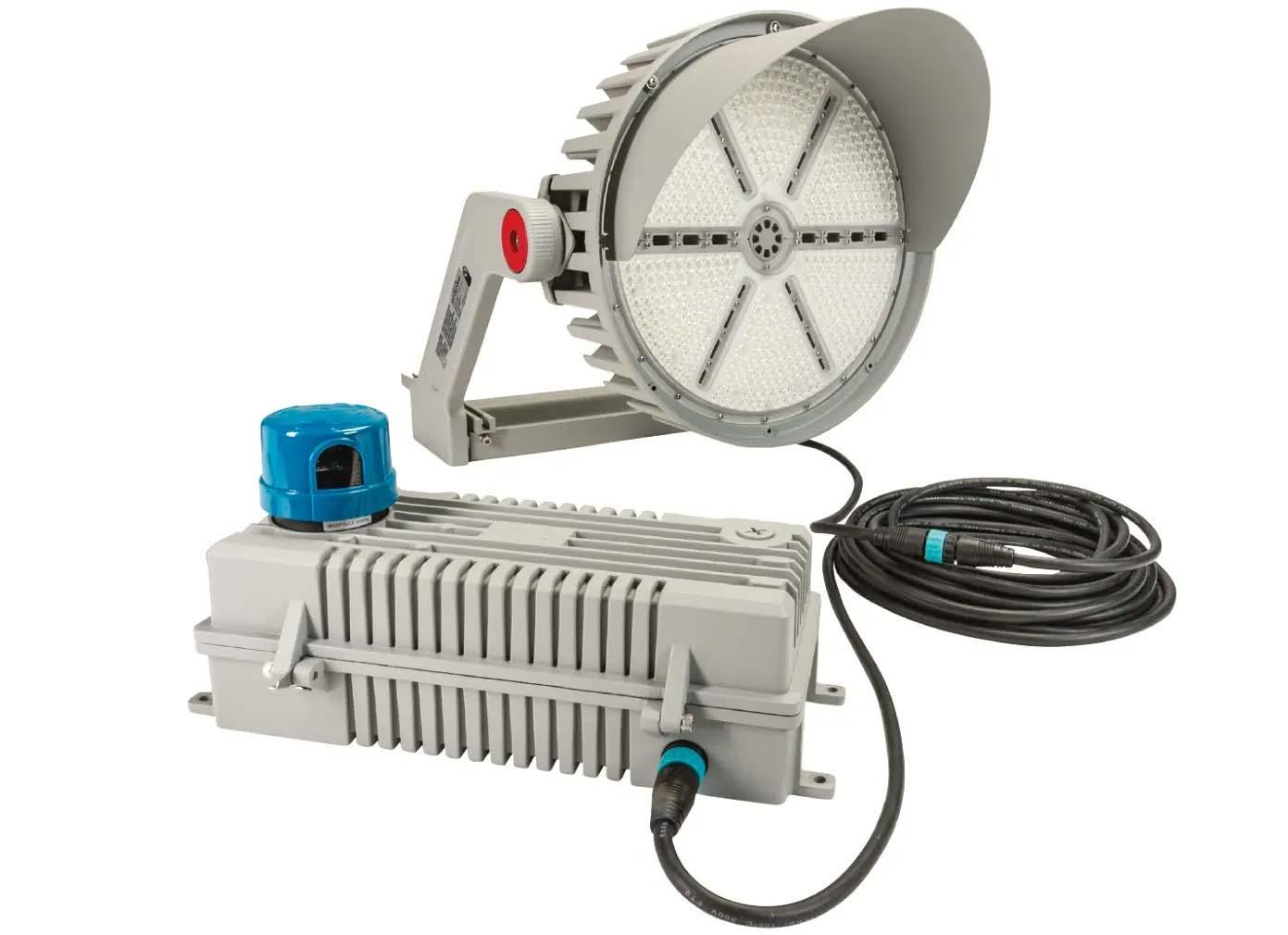
FROM PO TO DELIVERY IN LESS THAN TWO WEEKS
From the first quote request on April 29 to delivery on May 17, the entire project moved at breakneck speed. Keystone confirmed by May 3 that the customized 40° fixtures could be delivered within two weeks of receiving a purchase order. Nine pallets of fixtures were shipped just days later.
The contractor had a full week to complete installation before the first scheduled event. According to Murray, the layout design made the aiming process straightforward, with clear instructions printed on the fixtures themselves to guide installation. “Once they understood how to align the beams, they just knocked them all out,” he said.
An emergency in April became, by mid-May, a modernized, occupant-friendly facility consuming just 40% of the energy used by its predecessor.
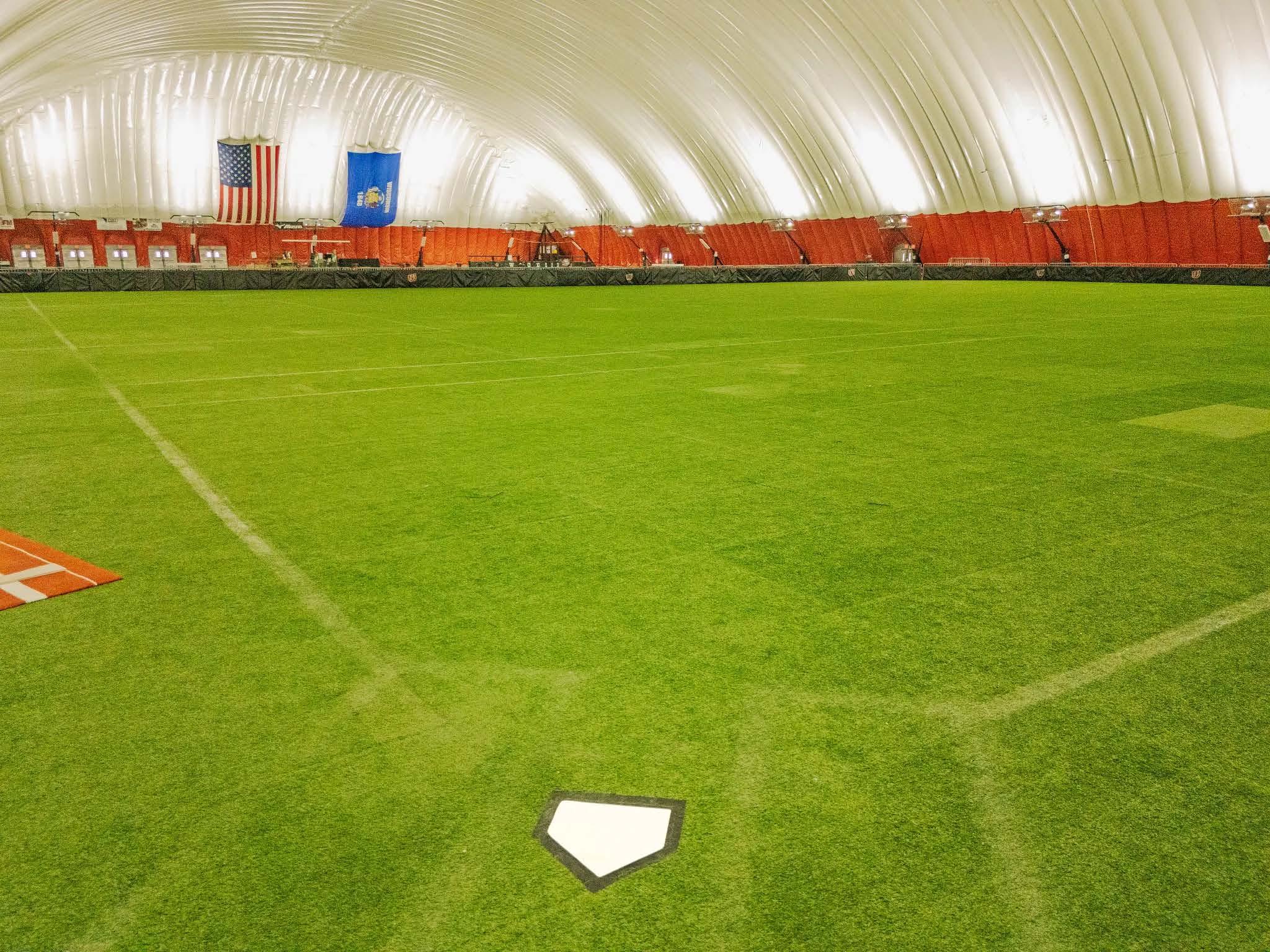
A MODEL OF COLLABORATION
The Dells Dome project is a textbook example of rapid coordination between manufacturer, rep, distributor, and contractor. Viking Electric handled procurement and logistics. Dakota Electric Service executed the installation on a tight timeline. Casey Electric Sales kept communication flowing between the field and Keystone, provided both products and layouts and adjusting their production schedule to meet the urgent need.
“It was impressive,” Murray reflected. “Keystone was willing to do whatever it took to get the right product delivered, on time. That’s what made the difference.”


